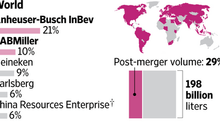Two Child Policy: China’s Next Steps Toward Development
- Annie Chen
- Nov 15, 2015
- 3 min read
China’s One Child Policy once meant to save China but, three decades later, may be the reason for China’s failure. The One Child Policy began in 1980 to counter Chairman Mao’s encouragement that citizens reproduce during the era of the “Great Leap Forward.” Major problems in food shortages crippled China’s economy because of the significant increase in population. Famine, widespread poverty, and natural disasters created great problems for the country. The policy instated to forcibly restrict reproduction was meant to save China but now it may be just the thing that ends China’s development, which has slowed down in the past few years.

China’s One Child Policy has created an enormous age and gender gap. The age gap has come about with the increased number of elderly as fewer children are born. The aging population has cast problems on China’s development as more of the aging population retire, with fewer children being born. This leaves a much smaller workforce having to take care of an increasingly large population of elderly. The expansive gender gap came from Chinese cultural preference that made male heirs more significant than female heirs. Thus, the Chinese population abort female fetuses because they are restricted to have only one child and choose to birth boys, especially in rural areas, where forced abortion is highly encouraged. The gender gap has become so large that, according to reports, by 2020, at least 24 million single men will be unable to find a spouse in China. The ratio has reached as high as 130 males per 100 females. The One Child Policy also discouraged the population from having more than one child by issuing fines that reached as high as several times the average income.

China’s plans to reform the One Child Policy have been occurring in recent years. China opened up its Two Child Policy toward families where, if one spouse was an only child, the family could then have another. The newest version in October 2015 has stated that all married couples could have two children. This new policy is meant to slow the decreasing rate of population, but China may find that implementing the policy may not have the rapid results they hoped it would. Their previous attempts at reform have found that many families with an only child parent chose not to have a second child because of arising beliefs in careers over families. Furthermore, the people who do want to have more children cannot afford to have more than the one. China’s policy change may also be too late, as the damage of the past three decades are not so easily fixed with its change to a Two Child Policy. As it is, even if people have more than one child, those children won’t be able to work until at least 2035, according to reports, but, by 2025, China’s current working population will still be dropping at least 10 million people per year. China will then face a competitive disadvantage as an extra injection of kids will make the decline of China’s workforce a little less steep after 2035 but will not reverse the trend (Quartz).

China’s lawmakers need to look past trying to maintain control over the reproductive systems of its citizens and look toward reforms that stop the insensitive and cruel measures of such restrictive policy-making. The changed Two Child Policy, in its attempts to increase the young demographic, may exclude families that want and can support third, fourth, or even more children, by only focusing on those that want and can support two children. Especially with the growing social globalization, females have become more independent and goal oriented, seeking professions beyond wife and mother. Lawmakers in China need to pay attention to all these issues and provide for a better tomorrow for its people by leaving behind their rigid, traditional views.



















Comments